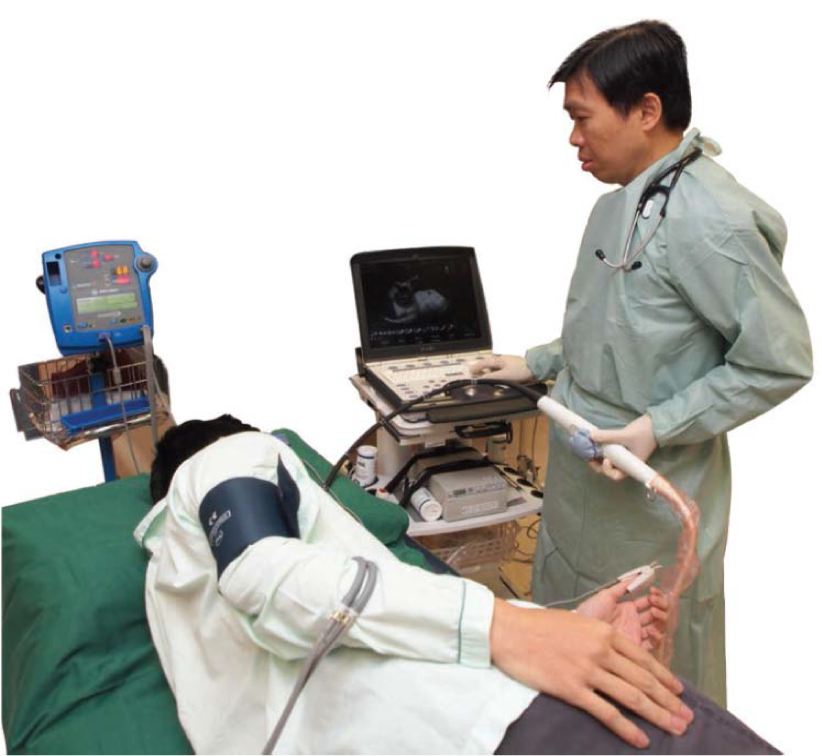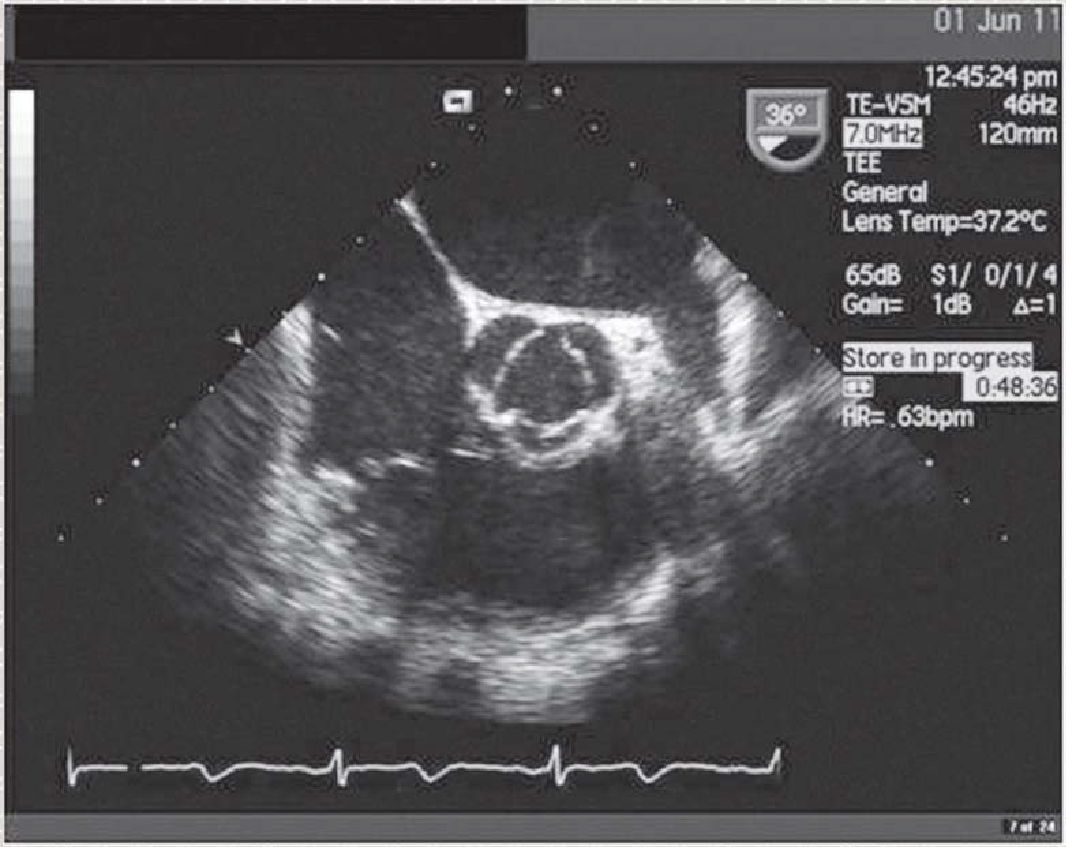
TEE being performed
What is Transoesophageal Echocardiography (TEE)?
Echocardiography is a procedure that uses ultrasound to scan the heart and its blood vessels. Transoesophageal Echocardiography (TEE) is a technique to obtain echocardiographic images through the oesophagus, which is the gullet or food passage where food and drinks pass through to reach the stomach.
A small transducer mounted on a flexible tube called a TEE probe is inserted down into the mouth and moved to the oesophagus and subsequently positioned behind the heart. Very clear pictures of the heart can be obtained by TEE.
What is the Purpose of this Procedure?
TEE allows a detailed examination of the heart and great blood vessels in the chest. It is especially useful for patients whose images were not captured well through Transthorocic Echocardiography (TTE). It is also useful to examine parts of the heart and major blood vessels which cannot be seen well with TTE.

TEE of aortic valve in cross section
What Can I Expect?
TEE is performed in the Non-Invasive Cardiac Laboratory by a cardiologist.
Before the Procedure
The procedure will be explained to you and you will be asked to sign a consent form. A small plastic tube or cannula will be inserted into a vein on your hand to facilitate administration of medication. You will also be given a local anaesthetic spray in the throat to numb it, and then asked to bite on a plastic biteguard. A sedative injection may be administered to help you relax. During the Procedure
You will need to lie down on your left side. The probe is passed through the biteguard, into the throat and down to the oesophagus. It will be moved about in the oesophagus and stomach to obtain the best images of the heart.
You may experience some discomfort having a probe in your throat but the procedure is usually painless and welltolerated, even by elderly patients. You can cough if you feel the urge to. Do not swallow your saliva.
Instead, you should let your saliva flow out. Your heart rhythm, blood pressure and oxygen level will be closely monitored during the procedure. The entire procedure takes about one hour.
After the Procedure
The cannula will be removed. You will be asked to rest for at least half an hour before leaving the laboratory. If you have received the sedation and still feel sleepy after the procedure, you may be asked to rest at the laboratory for a longer period.
Preparing for a TEE Procedure
You will need to fast for at least 6 hours before the procedure.
It is advisable that you are accompanied by a family member when you come for the procedure.
What Precautions Do I Need to Take After the Procedure?
Avoid driving after the procedure for the rest of that day due to possible lingering effects of the sedation.
Avoid eating and drinking for at least 2 hours after the procedure to allow the numbness in your throat to wear off. There is a risk of choking if you have not regain sensation in your throat.
You may experience a mild sore throat when the local anaesthetic wears off. There should not be any pain in the chest. If you feel severe pain in the chest or when you swallow, we may need to check for rare instances of damage to the throat or gullet. Please schedule an appointment with the cardiology clinic for a check-up. If you need help after clinic opening hours, please visit our emergency department for an assessment.
